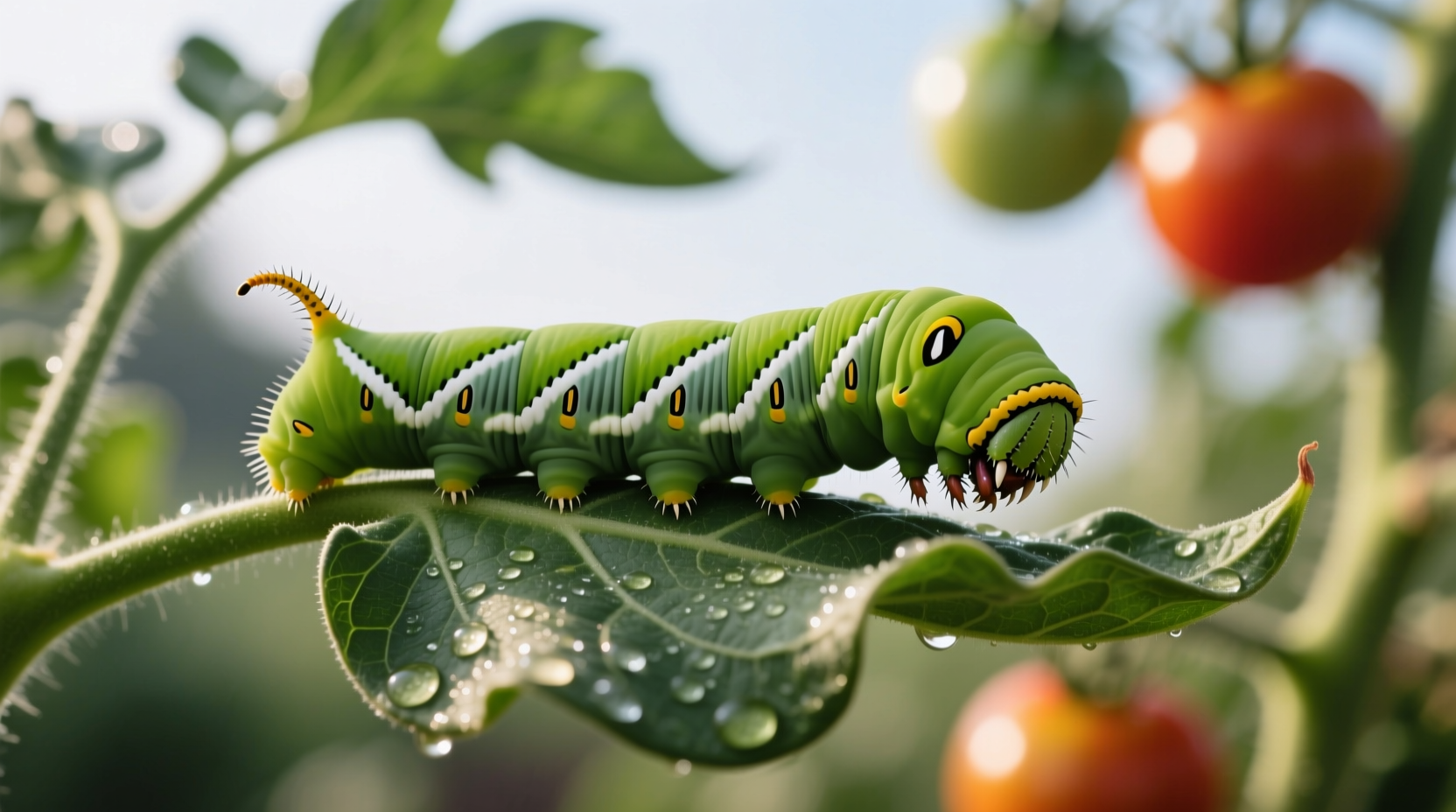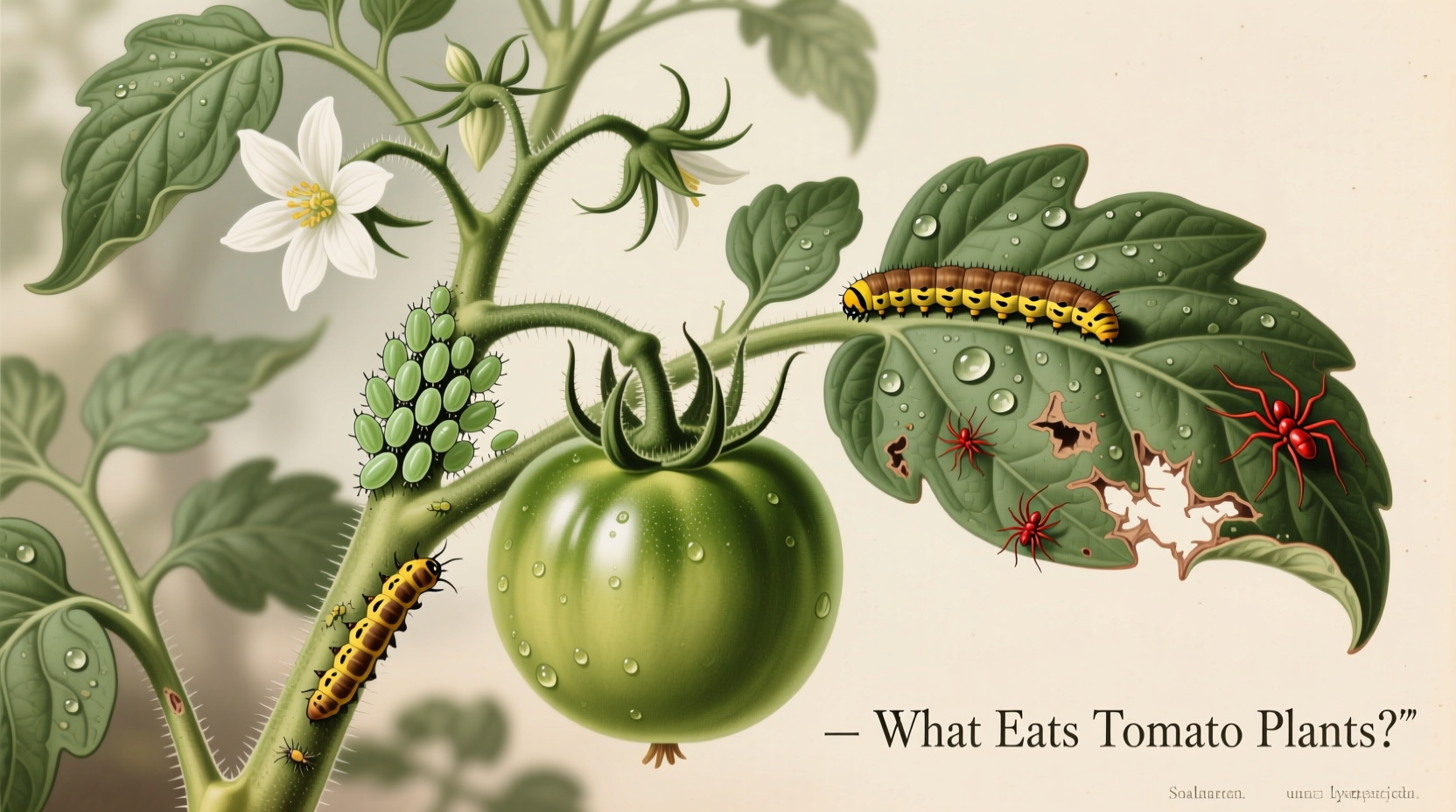The most common pests that eat tomato plants include tomato hornworms, aphids, cutworms, flea beetles, slugs, snails, and small mammals like rabbits and squirrels. Identifying the specific culprit requires examining the damage patterns, time of day the damage occurs, and visible signs like chewed leaves, holes in fruit, or pest droppings.
Identify Your Tomato Plant Invader: A Step-by-Step Guide
Discovering chewed leaves or missing fruit on your tomato plants can be frustrating. Before reaching for pesticides, correctly identifying what's eating your tomato plants is crucial for effective, targeted solutions. This guide helps you diagnose the problem and implement appropriate organic control methods.
Common Culprits: Who's Eating Your Tomatoes?
Tomato plants face threats from numerous pests, each leaving distinctive damage patterns. Understanding these patterns helps you pinpoint the exact problem:
| Pest | Damage Signs | Best Time to Spot | Organic Control Methods |
|---|---|---|---|
| Tomato Hornworms | Large, smooth holes in leaves; dark droppings on leaves below | Dawn or dusk (camouflage during day) | Hand-picking; Bt (Bacillus thuringiensis) |
| Aphids | Curling leaves; sticky residue (honeydew); ants farming them | Morning (cooler temperatures) | Strong water spray; insecticidal soap; ladybugs |
| Cutworms | Plants cut off at soil level; young seedlings destroyed | Night (burrow during day) | Collars around stems; diatomaceous earth |
| Flea Beetles | Small holes in leaves ("shot-hole" pattern); stunted growth | Warm afternoons | Row covers; neem oil; beneficial nematodes |
| Slugs & Snails | Irregular holes in leaves and fruit; shiny slime trails | Night or early morning | Beer traps; copper tape; hand-picking at night |
When Mammals Are the Problem
While insects cause most tomato plant damage, small mammals can also be culprits. Rabbits typically nibble lower leaves, squirrels take bites from ripening fruit, and birds peck holes in nearly ripe tomatoes. Look for these telltale signs:
- Rabbit damage: Clean cuts about 2 inches above soil level
- Squirrel damage: Small, irregular bites on fruit with claw marks on stems
- Bird damage: Small pecks in ripening fruit, often near the top of plants

Seasonal Pest Activity Timeline
Understanding when specific pests are active helps with prevention. The University of California Agriculture and Natural Resources provides this verified seasonal pattern for common tomato pests:
- Early Season (Transplanting to Flowering): Cutworms, flea beetles, and early aphid colonies
- Mid-Season (Fruit Set): Hornworms emerge; aphid populations peak; early slug activity
- Late Season (Ripening): Slugs/snails increase; birds and mammals target ripening fruit
This timeline helps you implement preventive measures at the right time rather than reacting after damage occurs.
Organic Identification Techniques
Before treating, confirm your pest identification with these reliable methods:
- Night Inspection: Use a flashlight after dark to spot nocturnal pests like cutworms and slugs
- Sticky Trap Monitoring: Yellow sticky traps help identify flying pests like aphids
- Leaf Examination: Check undersides of leaves for eggs, larvae, or adult insects
- Droppings Analysis: Hornworm droppings are large and dark; aphid honeydew is sticky
Effective Organic Control Strategies
Once you've identified your pest, implement these proven organic solutions:
For Insect Pests
- Companion Planting: Basil, marigolds, and borage repel many tomato pests naturally
- Beneficial Insects: Release ladybugs for aphids; parasitic wasps for hornworms
- Neem Oil Applications: Effective against aphids, mites, and early hornworm stages
- Physical Barriers: Row covers protect young plants from flea beetles and cutworms
For Mammal and Bird Pests
- Fencing Solutions: 2-foot chicken wire fence deters rabbits; 7-foot fence needed for deer
- Netting Protection: Lightweight fruit netting prevents bird damage without affecting growth
- Natural Repellents: Sprinkling cayenne pepper around plants deters mammals
- Harvest Timing: Pick tomatoes at first blush of color to avoid mammal interest
Prevention: Your Best Defense
Preventing pest problems is more effective than treating established infestations. Implement these preventive measures:
- Rotate crops annually to disrupt pest life cycles
- Maintain proper plant spacing for good air circulation
- Remove plant debris at season's end to eliminate overwintering sites
- Use drip irrigation instead of overhead watering to reduce slug habitat
- Apply mulch to create a barrier against soil-dwelling pests
When to Consider Professional Help
While most tomato pests can be managed organically, contact your local cooperative extension service if:
- You've identified an invasive species like the tomato leafminer
- Pest populations overwhelm organic control methods
- You need help distinguishing between pest damage and disease symptoms
The USDA National Institute of Food and Agriculture maintains a directory of extension services at nifa.usda.gov/land-grant-universities-cooperative-extension where you can find local experts.











 浙公网安备
33010002000092号
浙公网安备
33010002000092号 浙B2-20120091-4
浙B2-20120091-4